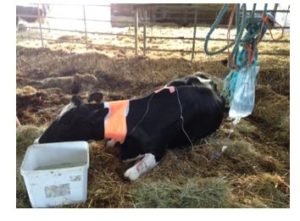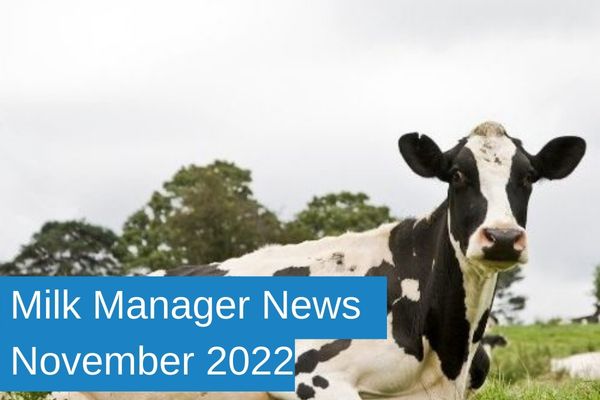Milk Manager News November 2022 – Downer Cow Syndrome
14 November 2022Downer Cow Syndrome
The definition of Downer Cow Syndrome is a cow that has not been able to get up for more than 24 hours. It is sometimes called Bovine Secondary Recumbency. No matter what you call it, it will cost time, money and will have a huge impact on a cow’s welfare.
The reason that a cow goes down and cannot get back up are many but can be divided into four main groups. These are Metabolic, Inflammation, Neurological and Trauma or MINT for short. Metabolic reasons can include hypocalcaemia (milk fever), hypomagnesaemia (grass staggers), nutritional acidosis, ketosis or acetonemia, hypokalaemia (low potassium) or fatty liver disease. Infections such as acute septic metritis or acute mastitis fall into the inflammation category. Nerve damage, often associated with a bad calving, make up the neurological category. Trauma includes bones fractures and dislocations and muscle or tendon ruptures.
Once the downer cow is discovered, a few quick checks can be made. A sunken eye, or a persistent fold in the skin after being pinched, will indicate that the cow is dehydrated. A low temperature shows that the cow is in some level of shock. Pale mucous membranes, especially if accompanied by a weak pulse, is a sign of toxaemia (toxins in the blood). This may be caused by infection.
Post-calving, the most likely cause of Downer Cow Syndrome is milk fever. If treatment with calcium is ineffective, it is important to act quickly to get the cow blood tested and examined by a vet. Treatment is often a process of elimination, so knowing where to start can lead to a better result.
Time is of the essence as pressure from lying can result in reduced blood flow to the muscles. This can cause muscle degradation and nerve necrosis (death). If this is allowed to occur, it is less likely that the cow will get to her feet again.
If the urine appears red in colour, this indicates the presence of myoglobin. This is a protein produced by the breakdown of muscle. Once this occurs the cow has less chance of rising, and the prolonged presence of myoglobin in the blood can lead to kidney failure. Therefore, it is vital to move the cow from side to side to help avoid this.
Obviously, the downer cow should be well bedded with access to feed and clean water. Consider providing fresh feed little and often, as she may not find feed that she has salivated on as appetising.
Lifting a downer cow has a number of associated welfare issues. Good stockmanship should be used in judging how much encouragement should be given. The use of hip clamps can be useful to help a cow rise but be aware that over tightening can reduce blood flow to the limbs. This can result in further damage. Under belly slings do not have these associated risks but can be more difficult and dangerous to place under a lying cow.
These devices should only be used to help the cow to her feet. If she is not carrying her own weight, she is effectively still under the same pressures as lying on the ground. The cow should not be supported in these devices for an extended period of time.
A more novel approach which has been used on farms in the EU and USA is a cow floatation tank. This takes all the pressure off the muscles and allows the cow to stand. For more information on floatation tanks see: https://www.aquacowsystem.com/
The cow’s welfare is of the utmost importance and there may come a point when euthanasia should be considered. As with most things, prevention is better than cure. Paying particular attention to dry cow nutrition can help with most metabolic issues and assessing the cow’s environment can help reduce slips and falls.
alasdair.scott@sac.co.uk; 01555 662562
Sign up to the FAS newsletter
Receive updates on news, events and publications from Scotland’s Farm Advisory Service


